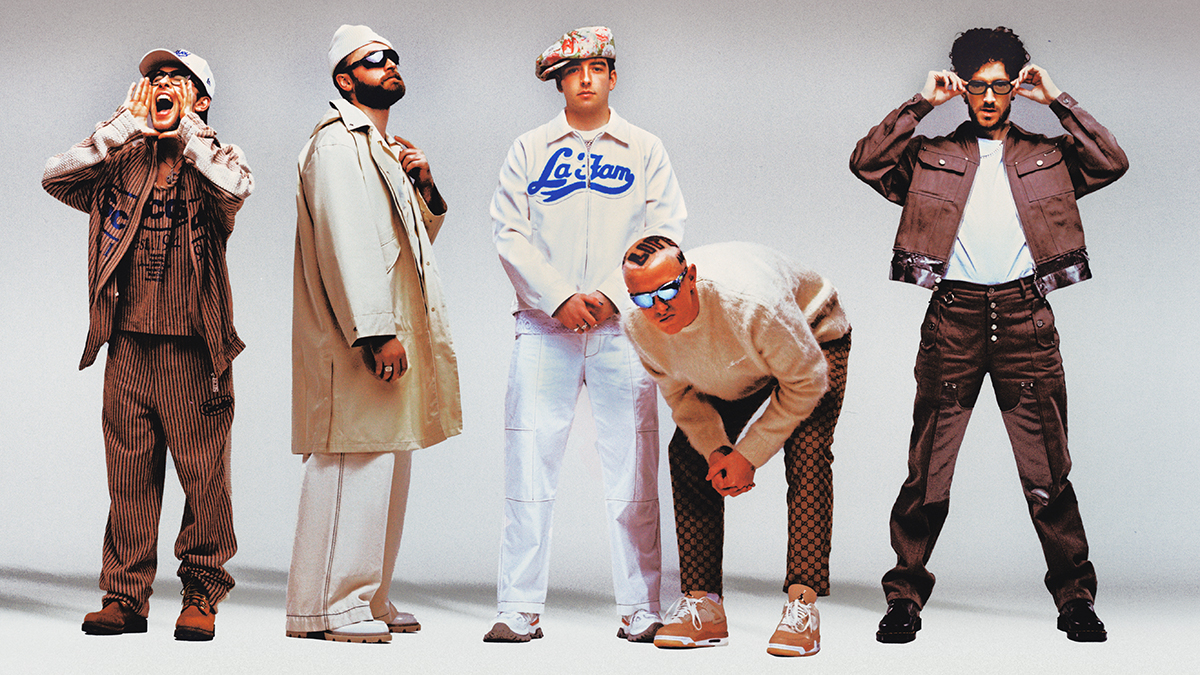The future is now: how Dolby Atmos is changing the way we make and listen to music
“It kind of opens it up and it gives you more options," say Brit band Easy Life

In the words of Ferris Bueller, life moves pretty fast, and that’s particularly true in the technology world. Which makes it all the more surprising that, since the widespread adoption of stereo more than half a century ago, the format we listen to our music in has remained largely unchanged.
But then came Dolby Atmos, a new and immersive audio delivery platform that enables you to experience your music in a whole new way. This isn’t something that exists in some far off future - it’s here right now, and all you need to experience it is a subscription to Apple Music.
It’s Dolby Atmos that powers Apple’s Spatial Audio technology. Launched last year, it’s quickly taken the Apple Music streaming service by storm, with an 80% uptick in the number of listeners since last September. The number of Spatial Audio song plays has increased four-fold in the same period, perhaps driven by the fact that there are now eight times more of them available since last summer.
Dolby Atmos is becoming equally important for creators, with more than 400 studios across 40 countries now supporting it. 200 more have committed to doing the same in the near future.
It’s easy for home studio users to mix in Dolby Atmos, too - it’s baked right into Apple’s Logic Pro DAW, and Dolby is working hard to educate producers at every level about the benefits that it offers.
One band that have recent experience of recording in Dolby Atmos are Easy Life. Of the benefits they saw and heard from it during the making of second album Maybe in Another Life, they say: “It kind of opens it up and it gives you more options of where you play sounds and how individual bits of songs kind of arrive in the listener’s head, doesn’t it?”
The band say that they were conscious of what Dolby Atmos could help them achieve when they were in the studio, and that it enabled them to work on “bigger productions” and think more about mic positioning. They’re keen to explore more of what it has to offer, noting that “It seems like the future, you know, to actually move the sounds around”.

It’s worth reiterating, though, that the future is now - this not a niche technology, but one that’s already garnered mainstream acceptance. Whether you want to enjoy a new song in stunning detail or finally hear a classic album as the artist imagined it in the studio, Dolby Atmos is your golden ticket.
You don’t need to buy new, expensive hardware, either - there are hundreds of millions of compatible playback devices already out there. All you need to do is sign up to Apple Music (a free trial is available if you haven’t tried it before), go to your Settings and make sure that Dolby Atmos is ‘Always On’ and you’re good to go. For maximum quality, you might also consider enabling high-quality Lossless Audio, and you should set the Sound Check feature to ‘On’, too.
You can experience Dolby Atmos music on your headphones, but you might find that you have a TV or soundbar that has it built-in, too. Either way, a whole new listening experience awaits.
You can find out more about Dolby Atmos on the Dolby website.
Want all the hottest music and gear news, reviews, deals, features and more, direct to your inbox? Sign up here.